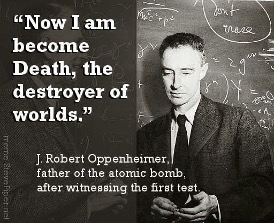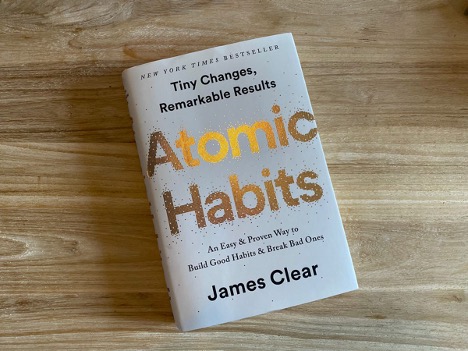Oppenheimer fully known as Julian Robert Oppenheimer born on April 22, 1904, in New York, U.S. and died in February 1943-45. Oppenheimer, a son of a German immigrant made his fortune by importing textiles in New York City. As a child, he excelled in Latin, physics, chemistry, published poetry and studied philosophy. After their studies, he undertook research studies at the University of Cambridge under the leadership of Lord Ernest Rutherford on atomic structure studies.

With the release of the movie, the story seems to have gathered the attention of the masses on the famed nuclear physicist’s iconic reference to Bhagavad Gita. J Robert Oppenheimer has often quoted from the sacred text, making the word synonymous with his achievements. Oppenheimer’s research resulted in the creation of the first nuclear bombs. He immediately understood the importance of what he had created and often said the first words that ran through his mind after the bomb was successfully tested in New Mexico in 19445. Upon witnessing the first successful test of the atomic bomb in New Mexico in 1945, Oppenheimer famously said, “Now I am become Death, the destroyer of worlds.” This quote is inspired by a verse from the Bhagavad Gita that goes, “If the radiance of a thousand suns were to burst at once into the sky, that would be like the splendour of the mighty one.”
Oppenheimer’s work on nuclear weapons had a profound impact on the course of history, shaping the world’s geopolitical landscape and sparking debates on the ethical and moral implications of atomic weaponry.
Oppenheimer is a film that delves into the life of a famous American physicist J. Robert Oppenheimer also known as the father of the atomic bomb. The film ‘Oppenheimer’ revolves around the events that preceded and succeed the world’s first nuclear test led by Oppenheimer for the US Army known as Trinity. The major focus of the movie is on Oppenheimer’s pivotal role in the Manhattan Project, a secret government initiative established during World War II to develop atomic weapons. As the scientific director of the project, Oppenheimer was tasked with assembling a team of brilliant scientists and overseeing the research and development of the atomic bomb. The film provides insight into the challenges and moral dilemmas faced by Oppenheimer and his team during the Manhattan Project. It delves into the intense pressure to develop the weapon as quickly as possible due to the ongoing war, juxtaposed with the ethical concerns surrounding the use of such a devastating force.

After the successful Trinity test, the film explores Oppenheimer’s conflicted emotions and his realization of the destructive power of the atomic bomb. His famous quote, “Now I am become Death, the destroyer of worlds,” reflects the profound impact the project had on him and the weight of responsibility he felt.
Furthermore, the film delves into the aftermath of the Trinity test, including the dropping of atomic bombs on Hiroshima and Nagasaki in August 1945, which led to the end of World War II but also raised serious ethical questions about the use of nuclear weapons.
Overall, “Oppenheimer” provides a gripping and comprehensive portrayal of J. Robert Oppenheimer’s life, his pivotal role in the development of the atomic bomb, and the moral complexities surrounding this groundbreaking scientific achievement that forever changed the course of history. The film not only sheds light on Oppenheimer’s scientific brilliance but also explores the human side of the physicist and the profound impact of his work on the world.
“Oppenheimer” is a complex and non-linear film that uses the portrayal of J. Robert Oppenheimer to mark different timelines. The movie explores Oppenheimer’s early academic achievements as well as later hearings that scrutinize his life. It weaves together the development of the Manhattan Project and a Senate hearing regarding Oppenheimer’s colleague, Lewis Strauss. The film’s structure can be challenging to follow, and time feels disjointed at times, especially during a significant encounter with Albert Einstein. Like Christopher Nolan’s other works, “Oppenheimer” may require multiple viewings to fully comprehend its intricacies, though it is less confusing than “Tenet.”
“Oppenheimer” faces criticism for its shallow portrayal of female characters. Florence Pugh’s character, Jean Tatlock, as Oppenheimer’s mistress, is not given sufficient depth. Similarly, Emily Blunt’s character, Kitty Oppenheimer, is mostly relegated to the background, sipping a martini in the initial hours of the film. However, she does shine in a powerful interrogation scene and a wordless glare that reveals her intense animosity towards a disloyal colleague later on. The film falls short of providing substantial development for its female characters, leading to dissatisfaction among some viewers.

“Oppenheimer” is an impressive film, showcasing Christopher Nolan’s preference for shooting on Imax 70mm film, resulting in a visually immersive experience. The attention to detail is remarkable, and scenes of intense blackboard scribbling convey the genius of scientific minds. Abstract moments transport viewers into the heart of the atom, and the sets seem to quake during moments of tension, emphasizing the impact of Oppenheimer’s work.
The film’s use of sound and music is especially effective, reminiscent of Jonathan Glazer’s “The Zone of Interest.” The horrors of war are conveyed through what is heard rather than seen. Ludwig Göransson’s exceptional score, one of the year’s finest, adds depth and emotion to the narrative. A recurring motif of thunderously stamping feet, initially representing triumph and glory, evolves into a mounting sense of threat as the devastating implications of Oppenheimer’s discoveries become apparent.
Written by – Sneha Das
Edited by – Mehansh Barthwal




